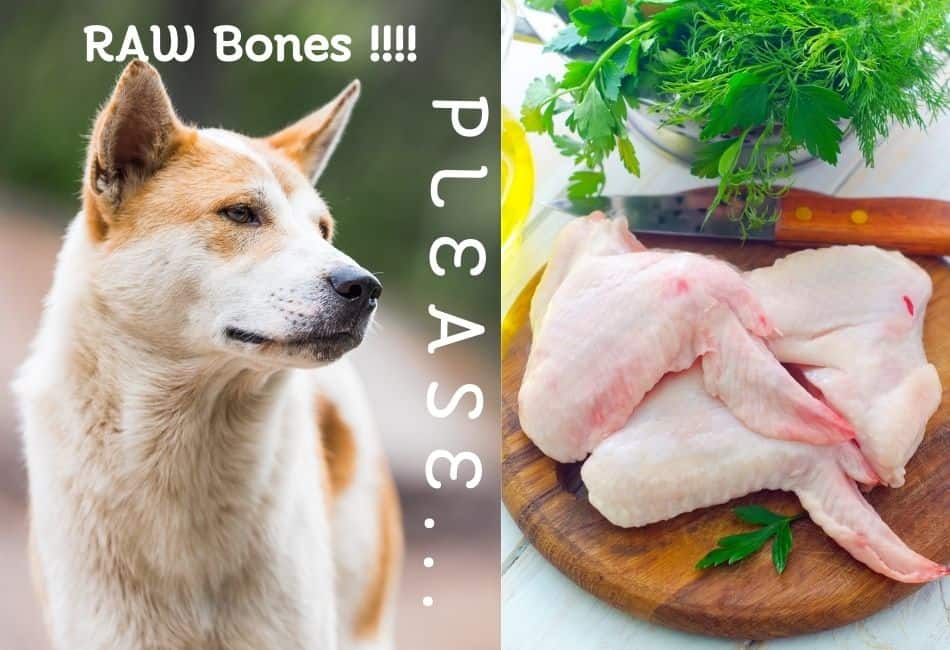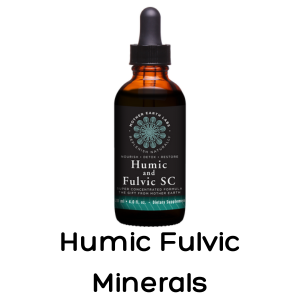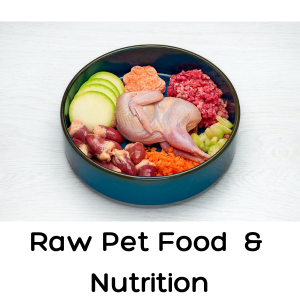Bones and dogs said in the same sentence have been a controversial topic ever since the inception of processed dog food. The purpose of this post is to dispel the myth that bones, raw bones to be specific, and raw chicken bones to be even more specific are not good for dogs. Quite the contrary. Read on to fully understand the answer to the question, “Can Dogs Eat Raw Chicken Bones?” You’ll learn not only that raw chicken bones and other raw bones are good for dogs but Why they are a beneficial and necessary part of a balanced species-specific diet.
Can Dogs Eat Raw Chicken Bones And Raw Chicken?
To get a thorough understanding of why dogs can eat raw chicken, raw meat and raw bones let’s look at exactly what a species-specific diet means. Well, species-specific means just that, it’s specific to its species. We are humans and eat a human diet, but unlike our canine companions, we don’t require raw meat nor bones in any form to meet our nutritional requirements. They DO.
The domesticated dog has evolved from its ancestor the wolf, who thrived in nature, living as a carnivore and omnivore eating all forms of raw flesh and bones to plant matter. Though there are thousands of dog breeds bred to perform an ever-widening scope of functions and tasks – there still remain two basic inherent traits.
- Physiological Need For Specific Nutrients
- Pack Mentality – The need to lead or be led
Physiological Need For Specific Nutrients
The first inherent trait: Raw bones are the number one source of minerals for dogs. Minerals in the raw bones are completely bioavailable, meaning they can be absorbed and digested easily. Raw bones are actually living tissue and contain complex sources of nutrients. If the bone is from chicken or turkey it will contain high amounts of essential fatty acids. In addition, fat-soluble vitamins are contained within the fat part of the chicken or turkey bone.
Pack Mentality – The Need To Lead or Be Led
The second inherent trait: Pack Mentality. Dogs by nature are designed to follow or lead, this is what ensures survival from the alpha to the omega. It explains the unwavering loyalty a dog engenders, hence the saying, ‘dog is man’s best friend.’ Be Your Own Dog Trainer For Dogs ~ Beginners Guide.
There is a reason this saying gave rise to its popularity. Equally as important as it is for a dog to have a pack leader, whether human or fellow canine, is the importance of a species-specific diet. So you ask, “Can dogs eat raw chicken bones?” of course they can and they should for optimum health.
Benefits of Raw Chicken For Dogs
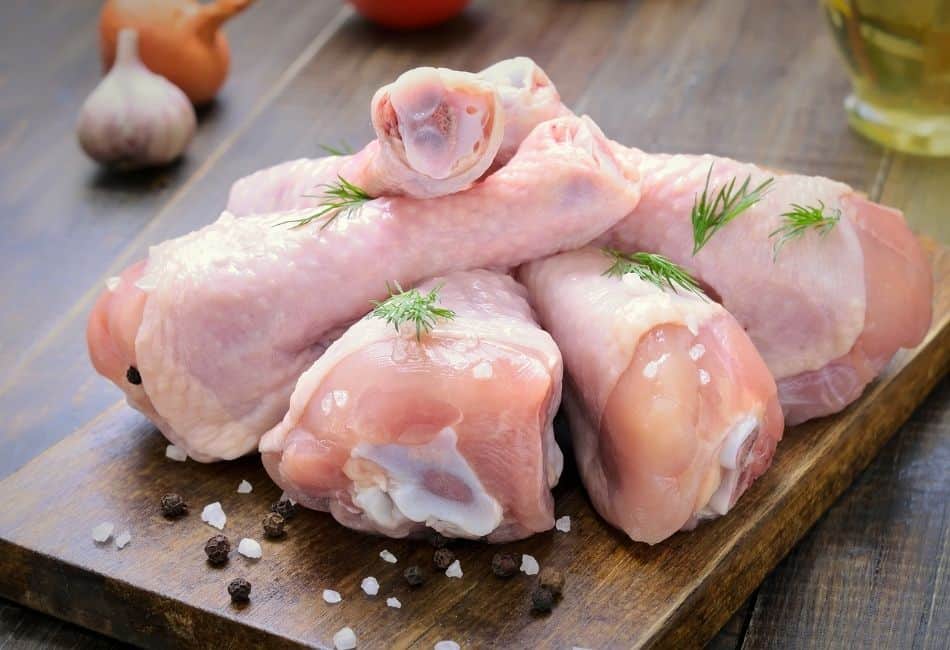
Continuing to answer the question, “Is raw chicken good for dogs”? Chicken is mostly considered muscle meat that is high in protein. Dogs being primarily carnivorous but also omnivorous, require a high protein diet consisting of various meats, organs, glands, BONES, vegetables, and fruit.
Chicken in particular is high in essential fatty acids but lacks enough of all the minerals to meet mineral requirements. Consequently, this is where the importance of raw bones comes in. In a species-specific diet, whether feeding chicken, beef, lamb, fish, or wild game, the diet is balanced with ground bones, organs, glands, and vegetables.
Can Dogs Eat RAW Chicken Breast?
Yes, the breast is one hundred percent muscle meat and has the highest degree of Omega 6 of all meats. You can feed some raw chicken breast with their balanced raw food meal or in addition or as a snack. Raw chicken breast can be bone-in or boneless and either is fine.
The bone of a raw chicken breast is smaller and has fine bones that are easy to break and crunch down. And the boneless chicken breast will provide for a high protein, muscle meat snack containing generous amounts of potassium and Vitamin A.
>>Learn How To Feed Your Dog By The BARF Principle – The Book And Guide By Dr. Ian Billinghurst>>
Can Dogs Eat Raw Chicken Thigh Bones
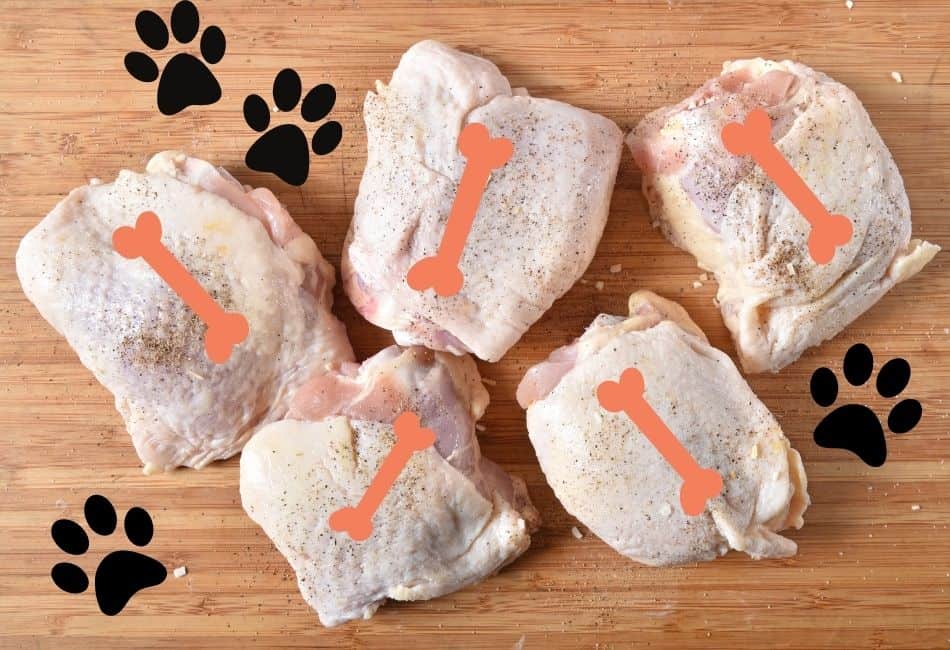
Yes, but start with raw chicken wings. (see paragraph below this one) If your dog has not had raw bones before, a chicken thigh bone is not the best to start with because of its size. It’s much larger than a wing bone. Another interesting thing with larger raw bones is that if your pup has not had them before they may be inclined to bury the bone immediately rather than chomp on it. A raw chicken bone is a much better choice than chemical-laden rawhide pseudo bone (see the section below on rawhide bones).
Natural Instincts
Some people may be inclined to call this a phenomenon but it isn’t. In the wild, dogs, wolves, coyotes, and the like eat their prey immediately while it’s fresh or they may bury it for later. Furthermore, and just as important or more so, is the fact that fresh prey, blood, bones, and carcass attract predators.
This instinct can arise in your domestic dog and they may panic and want to hide the smell of bone fearing predators – therefore, overriding the urge for a good chomp. I actually had this happen with my Queensland Healer. The first time and every time thereafter I fed her marrow bones she get a worried look on her face almost paranoid and then run off to bury the bone immediately.
She never went back to dig up the bones and partake. For her, because she also had Dingo breed in her which is a bit wild, her inclination was to preserve her life by burying the bone instead of consuming it. Can dogs eat raw chicken thigh bones? Yes, but start with a smaller bone or chicken wing for first-timers!

Can Dogs Eat Raw Chicken Wings
YES, raw chicken wings are one of the best raw bones to start younger dogs and adult dogs out on. They are small and can be crunched down easily. Start by offering them a chicken wing from good clean-sourced chicken such as organic or grass-fed or both. At first, if they have not had a raw diet before with bones, they may not know what to do.
1. Remove the skin from the wing
2. Offer the wing either in their bowl of food or separately
3. Use a meat cleaver and cut it in half if they don’t eat it right away
4. Allow only a few minutes for them to take the bone
5. If not put the piece away back in the refrigerator and offer it at a later time or the next day
NEVER Ever Cooked Bones Only RAW
Dogs in the wild do NOT eat cooked bones so our domestic dogs have not evolved to eat them. Most importantly is that they splinter and can cause damage to the throat, esophagus, and digestive tract. Dogs can choke on them. Also the nutrients have been cooked right out of the bone there is no nutritional value left in the bone.
KEY POINT: Dogs Should NEVER Eat Cooked Bones Of Any Kind!!! EVER!
Why Raw is Better Than Cooked?
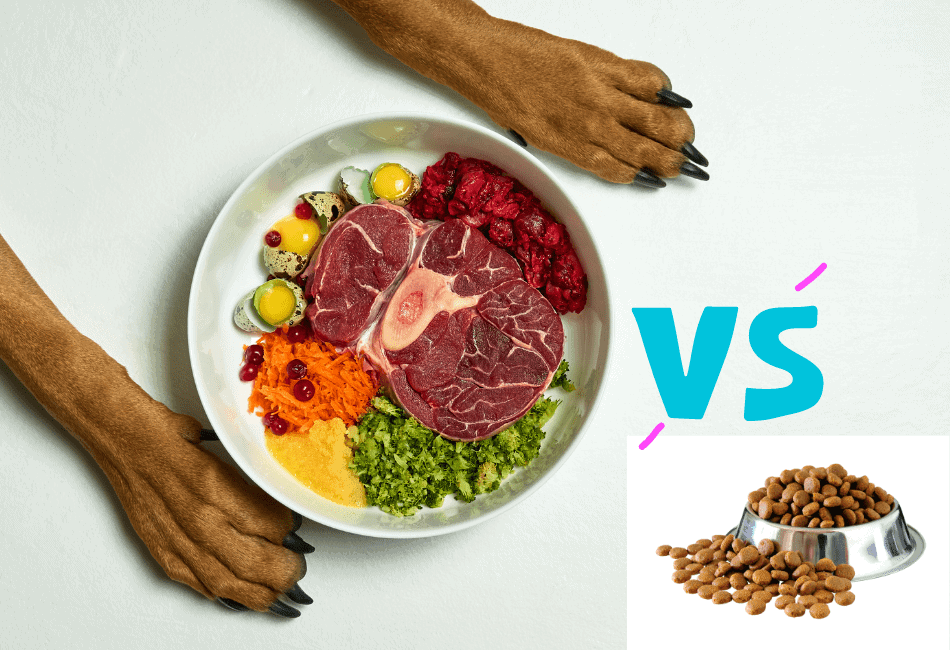
The Major Key To Raw Food ~ ENZYMES
What raw foods contain that cooked foods do not are living enzymes. And what are living enzymes? First, enzymes are a form of complex proteins found in the body that provide the energy to sustain life and allow the body to function. So, they are kinda important.
Second, they are energy catalysts producing over 150,000 biochemical reactions primarily assisting the digestion of food and delivery of nutrients. But enzymes also strengthen the immune system enabling it to fight off disease.1
Here is a brief list of the other important functions of enzymes:
- convert carbohydrates into fat
- deliver nutrients
- digest food
- purify the blood
- deliver hormones
- feed the brain
- protect the endocrine system
- break down and carry away toxic waste
- balance cholesterol
- turn protein into muscle
- life-saving because they establish homeostasis
And How Does Raw Food Benefit Dogs?
Enzymes are beneficial only if they are living. Hence, cooking destroys enzymes and so does processing the food. Eating cooked and processed kibble put stress on the pancreas to create more proteins to be able to function. Living enzymes occur naturally and are found only in a raw diet where they repair, restore and sustain health.
ENZYMES, ENZYMES, ENZYMES
All of this occurs organically without cooking, baking, or processing. Animals continually replenish the enzymatic systems by eating a raw unprocessed diet. By the way, humans benefit exactly the same way from raw foods except that we don’t eat raw beef, liver, and bones to attain the enzymes.
For people, they are found in raw, unprocessed fruits, vegetables, nuts, seeds, sprouted beans, legumes, and grains. It’s no different for your dog, just the source is different. Conveniently feeding dogs bags of highly carbohydrated, processed, cooked kibble is completely missing out on the living enzymes that sustain life.
>>Learn How To Feed Your Dog By The BARF Principle – The Book And Guide By Dr. Ian Billinghurst>>
A Raw Diet Influences The Immune System
As mentioned above in our discussion about living enzymes making the world go around, if the list of enzyme functions wasn’t enough to convince you we’ll add some more benefits related to the immune system. Feed your dog a balanced raw food diet and watch their health improve. Raw food can reduce inflammation thereby having a tremendously positive effect on inflammatory conditions. Many difficult skin conditions can be reversed by switching to an enzyme-rich diet and adding in a quality Omega fish oil.
- reduced allergies
- effective digestion
- absorption of nutrients
- breakdown and utilization of food
- skin conditions
- weight control
- lean body mass
- smaller stools & less stinky (due to adequate absorption of nutrients/minerals)
- decreased arthritis
- less aggression/better mood
- successful training
Bones, Teeth & Gum Health
Eating an enzymatic rich natural diet will break down the tartar build-up on teeth preventing unnecessary expensive routine veterinary teeth cleanings. In addition, due to the lack of tartar build-up from living enzymes, your dog’s breath will be much better. Periodontal disease is almost non-existent where it’s prevalent in grain-fed diets.
Due to the high content of protein, calcium, and phosphorus, these rich mineral sources are dentally abrasive acting as a toothbrush removing plaque. “Good” bacteria as well are naturally found in a raw diet which significantly contributes to shiny white teeth and a clean mouth. Aka – better doggie breath!
What’s Wrong With Raw Hide Bones
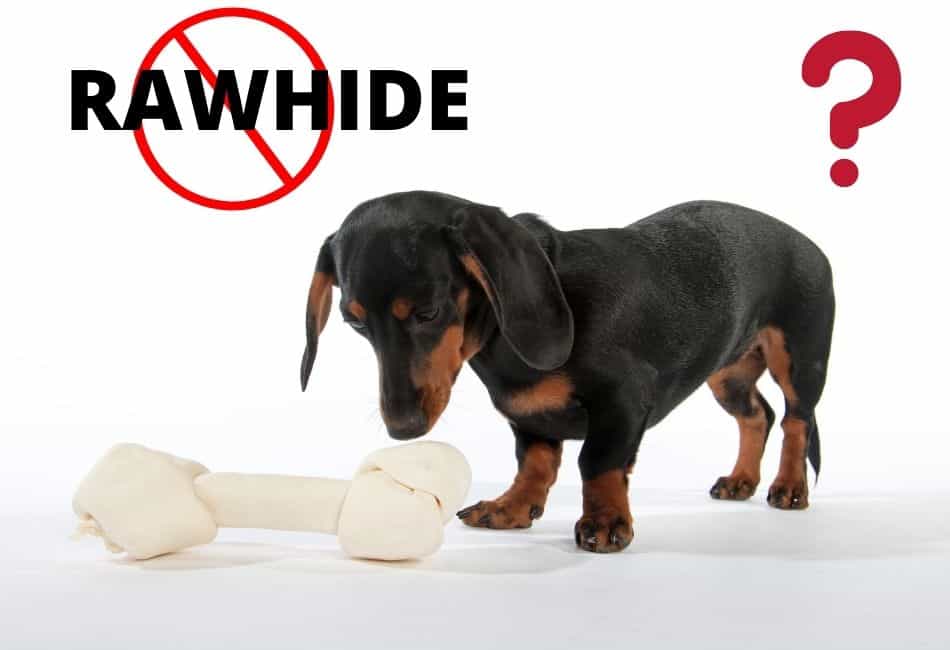
Rawhide isn’t all it cracked up to be though it keeps your dog happily chewing for hours, doesn’t smell, and comes in a nicely convenient package. Ahhh, so easy as a wonderful stocking stuffer or the perfect distraction to keep your pup blissfully chewing away. All the while, thinking you are doing wonders for his or her teeth and gums!
First of all, rawhide is heavily processed with chemicals and contains leather industry leftovers. Rawhide bones are massively marketed without this knowledge. Direct from the slaughterhouse the rawhides are placed in brine to slow the decay, note it doesn’t STOP the decay, only slows. Seriously, unfortunately, the hides can come from any animal used in leather manufacturing, not just cows.
Fat and hair are removed from the brined hide with chemicals such as sodium sulphide liming and ash-lye solution. Research these . . . they are highly toxic. In order to ‘puff’ the hide, more chemicals are used and finally to color the hide bleach is used to make them a pretty white color and remove any remaining fleshy scent.2
Healthy Options For Your Best Friend
So basically what you have is a rotten piece of leather that is chemically treated and preserved. It’s a natural instinct for a dog to want to chew on a bone, they are designed to do so so give them real, fresh, unchemicalized meaty raw bones including raw chicken bones. Your canine companion will be much healthier for doing so.
Or as a second option, you can give them quality sourced raw freeze-dried treats and snacks. I love this company and the first time I gave my cats the freeze-dried lamb lungs they became so calm and peaceful it was like giving them a tranquilizer. Why is this so? Because they are getting what they evolved to eat, a raw food diet! The absorption of minerals and nutrients can’t be understated.
Dispelling the Salmonella Myth
One of the biggest concerns people seem to have about a raw food diet for their dog is a salmonella bacterial infection. Although salmonella exists and breeds in certain conditions, it is mostly found in low-grade meats, milk, and polluted drinking water. Ingestion of the feces from another infected dog can cause a salmonella infection as well.
It doesn’t so much have to do with the raw chicken itself but the source, quality, and care of the chicken is the key factor. Chicken obtained from good clean sources, including organic and/or grass-fed, are important to assure quality control.
Why Dogs On A Raw Food Diet Are Less Susceptible To Salmonella
Remember all the functions of living enzymes, well they are designed to digest food rapidly. It doesn’t sit in the gut for long being shuttled off to the bowel to be eliminated. Salmonella flourishes in moist environments where it can hang around and proliferate.
Conversely, in an enzyme happy environment, there is no time to proliferate. And consequently, a high carbohydrate kibble meal takes much longer to digest and pass through.
KEY POINT: raw meat contains the exact living enzymes needed for its own digestion. There is no time delay here. Once again enzymes, enzymes, enzymes. Equally, poor digestion, slow digestion, and partially digested food can become a breeding ground not just for salmonella but for any microorganism. In addition, there are few undigested sugars and starches in the digestive tract for salmonella to feast on.
A dog’s digestive system in itself is quite different from humans. Dogs by nature are biologically designed to digest raw food. Dogs, wild and otherwise have been thriving and surviving in nature eating what nature provides from the food chain. I think they had it right from the beginning. They didn’t need human processing plants to come along and save them, they were here before processed, heat-treated food.
BARF ~ Biologically Appropriate Raw Food
Have you heard of the acronym BARF? Its two common meanings are Biologically Appropriate Raw Food and Bones and Raw Food. Nutritionist and veterinarian, Dr. Ian Bliinghurst founded the principle of feeding dogs the appropriate diet they evolved to eating. The raw diet – consists of greens and meats that are wild, fresh, and uncooked.
This principle is based on a diet high in protein, minimal carbohydrates, and moderate fat and consists of the following:
- Muscle meat
- Raw meaty bones
- Organ meat
- Vegetables and fruits
- Select Supplements
>>Learn How To Feed Your Dog By The BARF Principle – The Book And Guide By Dr. Ian Billinghurst>>
Concluding Thoughts
Can dogs eat raw chicken bones? Unequivocally, dogs should eat raw chicken bones and other raw bones to ensure a healthy immune system, metabolism, digestive tract, and strong teeth and gums. Always choose chicken, chicken bones, and any meat for your dog from a clean, quality, source. In the same way, a good rule of thumb feed your dog what you would choose for yourself and you should be good to go!

Other Related Posts
Can Dogs Eat Zucchini? This Veggie Packs A Powerful Punch
Can Dogs Eat SeaWeed? 10 Reasons Why ~ Types & Benefits
Can Dogs Eat Olives? Best Olives For Dogs & Medicinal Uses

